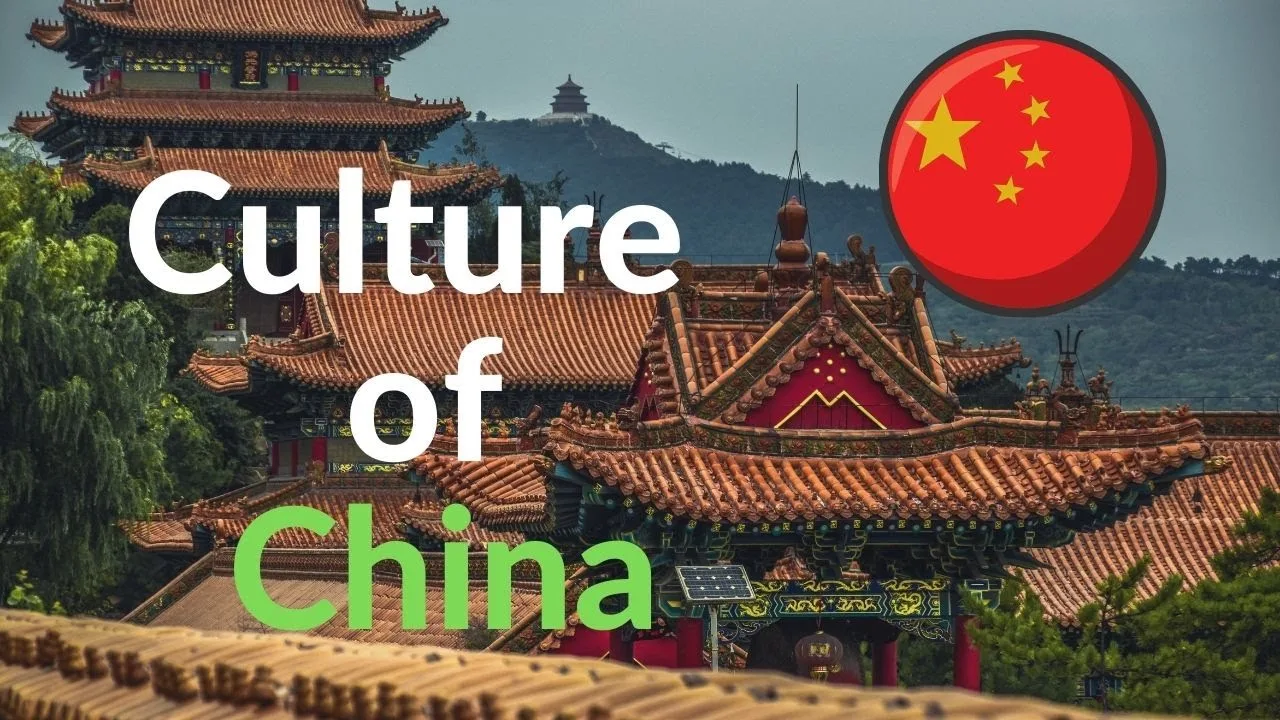Introduction
The old civilization of China, crossing thousands of a long time, has a greatly different and profound social embroidered artwork. From the notorious Awesome Divider to the craftsmanship of calligraphy, from the living conventions of Chinese musical drama to the significant reasoning of Confucianism, China’s legacy could be a treasure holding up to be found. This article welcomes peruses on an interesting journey through the verifiable and social diamonds that make up China’s uncommon legacy. China’s chronicled points of interest are a confirmation of its persevering bequest. The Extraordinary Divider, a building wonder traversing thousands of kilometers, reflects the assurance of old traditions to guard their domain. Its magnificence and scale astound guests and outline China’s wealthy history of fortress and defense. Calligraphy, a regarded convention, reflects the substance of Chinese culture. Each brushstroke has meaning and tastefulness that embodies centuries of creative advancement. Calligraphy isn’t almost about composing; it is an expression of feeling, logic, and magnificence. The Chinese musical drama, with its colorful outfits and charming exhibitions, appears as the dynamic social legacy of the nation. From the fragile moves of Peking Musical drama to the gymnastics of Sichuan Musical drama, each territorial fashion offers a one-of-a-kind see of China’s different aesthetic conventions. Musical drama isn’t just entertainment it could be a living craftsmanship frame that has advanced over centuries. At the heart of Chinese culture is Confucianism, a reasoning that shaped the morals and values of the country. The logic established by Confucius emphasizes profound quality, family values , and social agreement. Confucian lessons profoundly impacted Chinese society, administration, and individual behavior. Chinese celebrations and celebrations strikingly express their social abundance. Chinese Unused Year, with its mythical beast moves and firecrackers, marks the start of the lunar calendar with joyous celebrations. The Mid-Autumn Celebration celebrated with moon cakes and lanterns, may be a time when families gather to respect the total moon. As China grasps modernization, the preservation of cultural heritage is obvious. UNESCO World Legacy Destinations such as the Taboo City and the Earthenware Warriors are glad gatekeepers of China’s past. Conventional expressions such as tea ceremonies and military expressions proceed to flourish near present-day advancements, showing a concordant mix of old conventions and advanced innovations.
The Magnificent Dynasties
China’s wealthy social history dates back to the Neolithic period, where destinations just like Banpo Town uncover early settlements and ceramics, exhibiting the beginnings of Chinese civilization. The Shang Line (1600–1046 BCE) checked a noteworthy time with the rise of early Chinese composing on prophet bones, laying the establishment for the perplexing characters that characterize Chinese calligraphy nowadays. Taking after the Shang, the Zhou Line (1046–256 BCE) presented the rationalities of Confucianism and Taoism, which have since formed Chinese thought, morals, and social character.
The Tang Line (618–907 CE) is frequently hailed as the “Brilliant Age of China,” characterized by thriving and prospering of expressions and culture. It was during this time that verse, craftsmanship, and music flourished, with eminent artists like Li Bai and Du Fu clearing out a permanent stamp on Chinese writing. The Tang capital of Chang’an (modern-day Xi’an) got to be a center of cosmopolitanism, inviting travelers from along the Silk Street and cultivating social trade.
Moving forward to the Tune Line (960–1279 CE), China saw noteworthy headways in craftsmanship and innovation. Scene portray, known for its quiet and pensive fashion, comes to unused statures with craftsmen such as Fan Kuan and Guo Xi. Developments like black powder, the compass, and mobile sort printing revolutionized Chinese society, facilitating the spread of information and concepts both inside China and past its borders.
China’s building wonders, such as the Incredible Divider, stand as persevering images of old designing ability. Traversing over 13,000 miles, the Incredible Divider was developed over centuries to ensure against attacks from roaming tribes, displaying China’s authentic guts. Essentially, the Taboo City in Beijing served as the majestic royal residence for about 500 a long time, lodging sovereigns of the Ming and Qing Traditions. With its fantastic lobbies, complicated patios, and grand entryways, the Illegal City remains a showstopper of Chinese design and offers a see into the extravagance of China’s royal past.
Chinese reasoning and religion have significantly impacted the nation’s culture and societal standards. Confucianism, established by Confucius (551–479 BCE), emphasizes values such as ethical quality, family, and social concordance. Its standards have cleared out an enduring effect on Chinese administration, instruction, and personal ethics. Taoism, established within the lessons of Laozi, emphasizes living in concordance with the Tao, or the “Way,” advancing straightforwardness, nature, and adjustment. Hones such as contemplation and military expressions are profoundly interwoven with Taoist convictions. Furthermore, Buddhism, presented to China from India, has ended up an indispensable portion of Chinese culture. From the wonderful Buddhist grottoes of Dunhuang to the quiet sanctuaries of Mount Emei, Buddhism’s impact can be seen over China’s tremendous scenes.
Chinese conventional expressions and makes are celebrated shapes of expression that have stood the test of time. Chinese calligraphy, respected as one of the most elevated shapes of craftsmanship, combines brushwork, ink, and paper to form rich characters. Each stroke carries meaning and tasteful excellence, making calligraphy a loved craftsmanship shape that reflects the substance of Chinese culture. Chinese musical drama, with its colorful costumes and captivating exhibitions, could be a centuries-old convention that exhibits China’s dynamic social legacy. From the expanded ensembles of Peking Musical drama to the aerobatic accomplishments of Sichuan Musical drama, each territorial fashion offers a special see into Chinese imaginative expression.
Celebrations hold uncommon significance in Chinese culture, reflecting centuries-old conventions and convictions. Chinese Modern Year, the foremost conspicuous festival, marks the start of the lunar calendar with mythical beast moves, firecrackers, and merry get-togethers. It could be a time of recharging, family reunions, and well-wishes for the year ahead. The Mid-Autumn Celebration celebrated with moon cakes and lights, could be a time for families to accumulate and appreciate the full moon’s magnificence. Old stories and legends include profundity to these charming celebrations, enhancing the socially embroidered artwork of China.
As China proceeds to grasp modernization, endeavors to protect its social heritage are evident. UNESCO World Legacy locales just like the Taboo City and the Earthenware Warriors stand as testaments to China’s commitment to shielding its past. Conventional expressions such as tea ceremonies and military expressions proceed to flourish near advanced advancements, exhibiting a concordant mix of antiquated conventions and modern innovations. This intricate adjustment between conservation and advancement underscores China’s significant social bequest, welcoming the world to investigate and appreciate its wealthy history and conventions
Conclusion
In conclusion, China’s social embroidered artwork stands as a dynamic confirmation of its momentous history and persevering bequest. From the fantastic Extraordinary Divider, an image of old building ability, to the fragile strokes of calligraphy that pass on significant meaning, China’s legacy reflects a civilization soaks in convention and development. The dynamic exhibitions of Chinese musical drama transport us to a world of colorful outfits and centuries-old stories, whereas the ageless shrewdness of Confucianism proceeds to shape Chinese society. Setting out on a travel through China’s social legacy could be a captivating involvement. Each perspective, from the magnificence of royal residences to the complicated points of interest of conventional, creates, offers a see into the profundity and differing qualities of this ancient civilization. The amazing accomplishments of traditions just like the Tang and Tune, with their thriving expressions and headways in innovation, remind us of China’s significant commitments to human history. Investigating China’s celebrations and celebrations, such as the exuberant Chinese Modern Year with its mythical beast moves and happy social occasions, uncovers the lavishness of its conventions and the soul of solidarity that invades these euphoric events. Essentially, the Mid-Autumn Celebration, with its moon cakes and lights, welcomes us to appreciate the magnificence of nature and the significance of family bonds. As we dig into the world of Chinese reasoning and religion, we experience the significant lessons of Confucianism, emphasizing profound quality and social concordance, near the peaceful logic of Taoism, which finds agreement in straightforwardness and nature. Buddhism’s impact, seen within the grand Buddhist sanctuaries and grottoes scattered over the nation, includes an otherworldly measurement of China’s cultural landscape. Within the middle of China’s modernization, endeavors to protect its cultural heritage are apparent. UNESCO World Legacy locales like the Taboo City and the Earthenware Warriors stand as glad gatekeepers of China’s past, reminding us of the significance of protecting history for future eras. Conventional expressions such as calligraphy and musical drama proceed to flourish, serving as a bridge between the past and the present. In essence, China’s social embroidered artwork could be an energetic and ever-evolving mosaic that captivates with its excellence, rouses with its depth, and offers immortal treasures to those who look to investigate its ponders. It may be a living bequest that welcomes us to celebrate the abundance of China’s legacy and the persevering soul of its individuals.

Mr. Ovais Ali Khokhar is Chairman, Board of Experts, Pakistan Research Center for a Community with Shared Future (PRCCSF), Islamabad.


